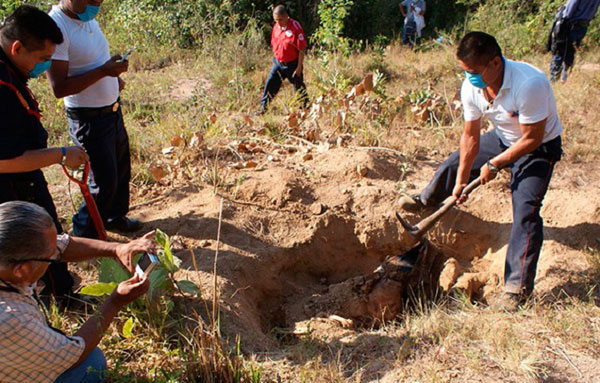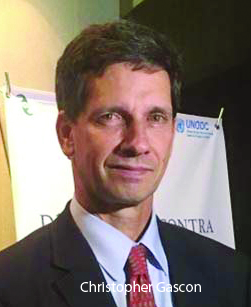by Sam Husseini
Many are claiming that Trump is being inconsistent in illegally attacking the Syrian regime with cruise missiles.
After all, he had been saying the U.S. should focus on defeating ISIS, and now he seems to be going after Assad. But contradictions from Trump are a dime a dozen.
A closer examination shows a deeper pattern of remarkable consistency in U.S. policy toward Syria that is far more critical than the perennial contradictions of politicians like Trump.
To summarize U.S. actions and non-actions in terms of direct publicly announced U.S. air attacks targeting the Syrian regime: In 2013, when Assad was losing the war, Obama refrained from strikes that may well have ended his regime. Now, four years later, when Assad seems close to winning the war, Trump with a revamped NSC does a 180 on his previous pronouncements and attacks Assad.
Push away the personalities. Dispense with the rhetoric. Free yourself from the spin cycle that much of the media obsess over. Just follow the policy.
The evidence is that the underlying U.S. policy—whether the president is Obama or Trump—is to prolong the Syrian war as much as possible. Let Assad off the hook when he’s cornered, hit him when he’s about to win.
This would not at all be unprecedented. Through the 1980s, the U.S. backed both sides in the Iran-Iraq War, which resulted in horrific carnage. See Dahlia Wasfi’s piece from 2015—“Battling ISIS: Iran-Iraq war redux”—which argued that “Obama’s unofficial strategy to fight ISIS may be that of Reagan’s for Iran and Iraq in the 1980s: a long, drawn-out war to strengthen U.S.-Israeli hegemony in the region.”
Since the Arab uprisings of 2011, we’ve seen a series of actions by the U.S. government and its allies and clients—from Israel and Saudi Arabia in particular—to ensure the destruction of secular, at times independent Arab governments.
Many obsess over “double standards” and apparent contradictions by Trump, Obama, Clinton and other political figures. But much of this analysis presumes that these political figures have stated what their actual goals are.
But a president can’t come forward and publicly say that the goal is the continuation of the war in Syria. That would be to embrace the carnage and suffering that the policy causes. The president can’t just say we’re in cahoots with the authoritarian Israeli and Saudi regimes to keep countries like Iraq, Syria and Libya in turmoil.
So, politicians claim they are acting to save human life or to stop weapons proliferation or whatever their pretext is. Then, because it’s not their actual reasons, people see what seem like contractions: “They don’t know what they’re doing!” “He’s such an idiot!” But they are not really contradictions, they just highlight that the stated goals are not the actual goals.
Except at times. Trump did say in a high profile debate in September 2015: “ISIS wants to fight Syria. Why are we fighting ISIS in Syria? Let them fight each other and pick up the remnants.”
And this gruesome notion is occasionally brought up in the establishment media in more polite terms. In 2013, the New York Times reported on how Israel viewed the prospect of Obama bombing Assad’s forces:
Israelis have increasingly argued that the best outcome for Syria’s two-and-a-half-year-old civil war, at least for the moment, is no outcome.
[For the Israeli government], the status quo, horrific as it may be from a humanitarian perspective, seems preferable to either a victory by Mr. Assad’s government and his Iranian backers or a strengthening of rebel groups, increasingly dominated by Sunni jihadis.
“This is a playoff situation in which you need both teams to lose, but at least you don’t want one to win—we’ll settle for a tie,” said Alon Pinkas, a former Israeli consul general in New York. “Let them both bleed, hemorrhage to death: that’s the strategic thinking here. As long as this lingers, there’s no real threat from Syria.”
The synergy between the Israeli and American positions, while not explicitly articulated by the leaders of either country, could be a critical source of support as Mr. Obama seeks Congressional approval for surgical strikes in Syria.
This notion comes up occasionally.
It’s often claimed that “regime change” is the goal of the U.S., including by presumed critics of it. But that might be too simple of an explanation. After all, the U.S. government sometimes claims this is its goal. At times the goal may well be not “regime change” but No Regime.
Perhaps the U.S. establishments would like subservient leaders in Syria and Iraq and Libya. But these are significant counties with population, some resources and some capacity for independence. This is in contrast with Gulf sheikdoms and other monarchies like Jordan which are effectively client states of the U.S.
So, if permanent subservience is not possible, then a crippled country, with the possibility of dismemberment, is a fairly good option for those intent on ensuring U.S.-Israel-Saudi dominance of the region. At least for the time being.
Keep the fighting, keep the bleeding. Keep the people of the Mideast divided and fighting while the U.S. establishment solidifies its plans on how it will “pick up the remnants.”
The phrase “Deep State” has been in vogue of late, as if it’s an entity that Donald Trump were out to undo even as he empowers it. But what does that really mean? A bureaucracy, perhaps. But more than anything, I think it’s an articulation of policy that the U.S. government pursues that dare not speak its name.
Sam Husseini is founder of VotePact.org, which works for left-right cooperation. He is also communications director of the Institute for Public Accuracy.









